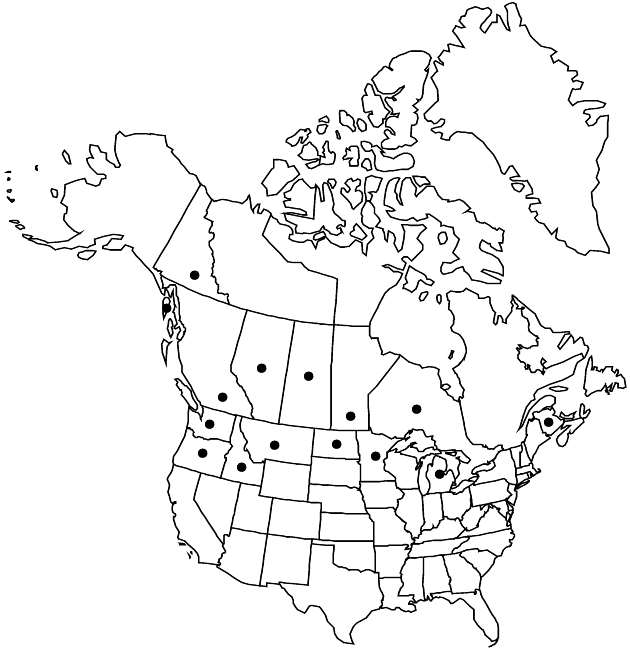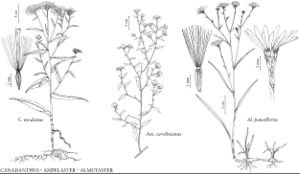Canadanthus modestus
Phytologia 77: 251. 1995.
Plants openly colonial; rhizomes 1–3+ from base of each stem, herbaceous, ± woody with age. Stems 1, often glabrate proximally to ± villous, distally stipitate-glandular. Leaves: proximal scalelike, withering by flowering; blades (16–) 50–130 × (4–) 10–30 (–40) mm, reduced distally, thin, bases auriculate-clasping, margins ± scabrous to (distal) stipitate-glandular. Heads (1–) 2–40+. Peduncles sometimes villous, densely stipitate-glandular; bracts 1–2 (–3), linear-lanceolate, stipitate-glandular. Phyllaries squarrose, innermost appressed, apices often ± purplish, acuminate. Ray-floret laminae 7–11 (–15) × 0.8–1.2 mm. Disc-floret corollas 5–7 mm, glabrous, lobes 0.5–0.7 mm. Cypselae stramineous, stipitate; pappi surpassing or ± equaling disc corollas. 2n = 18.
Phenology: Flowering late summer–early fall.
Habitat: Cold, wet soils, often ± calcareous, moist woodlands, often along streams, lake shores, alder thickets, open fields, cedar swamps, in montane and boreal forests
Elevation: 0–1300+ m
Distribution

Alta., B.C., Man., N.B., Ont., Sask., Yukon, Que., Alaska, Idaho, Mich., Minn., Mont., N.Dak., Oreg., Wash.
Discussion
Selected References
None.
Lower Taxa
No values specified.
